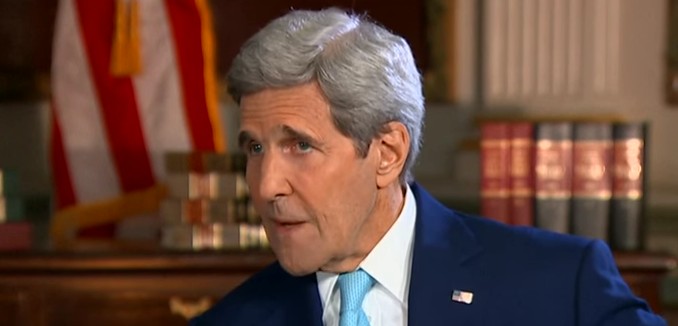The White House and State Department have used misleading claims to respond to criticisms that a clause in the nuclear deal giving Iran 24 days to explain a suspicious nuclear site will allow the Islamic Republic to sanitize or hide illicit material.
On a page of the White House website set up to explain the deal (formally known as the Joint Comprehensive Plan of Action, or JCPOA), the administration responded to the argument that the it backed away from its previously stated positions that “anytime, anywhere” inspections of suspected nuclear facilities were necessary. It responded by saying,
Standard practice under the Additional Protocol, which Iran will implement under this deal, is that the IAEA [International Atomic Energy Agency] can request access to any suspicious location with 24 hours’ notice. This deal does not change that baseline. But there are situations in which the IAEA and a State might negotiate the terms of access before the IAEA actually goes on site, and for that reason, the JCPOA sets an outer limit for those discussions.
However, the Additional Protocol only governs declared nuclear sites, which under the terms of the deal would be under constant surveillance. The 24 days would apply to undeclared sites, which would then be at risk of being cleaned up before an inspection.
Similary, in an op-ed published Wednesday in The Washington Post, Secretary of State John Kerry and Secretary of Energy Ernest Moniz, both members of the American negotiating team, wrote:
Much has been made about a possible 24-day delay before inspectors could gain access to suspected undeclared nuclear sites. To be clear, the IAEA can request access to any suspicious location with 24 hours’ notice under the Additional Protocol of the Nonproliferation Treaty, which Iran will implement under this deal. This accord does not change that baseline. In fact, the deal enhances it by creating a new mechanism to ensure that the IAEA gets the required access and sets a firm time limit to resolve access issues within 24 days. This mechanism provides an important tool for ensuring that Iran could not delay indefinitely.
In addition to conflating the declared nuclear sites with undeclared sites, their argument doesn’t address a concern that a growing number of independent nonproliferation experts—including the former deputy director-general of the IAEA, Olli Heinonen, and the president of the Institute for Science and International Security, David Albright—have identified. Heinonen and Albright both acknowledged that 24 days would be sufficient time to catch cheating at a large nuclear site, but a small nuclear site could easily be sanitized in that time.
In an interview with The Wall Street Journal‘s Mary Kissel, Omri Ceren, The Israel Project’s managing director for press and strategy, addressed the administration’s claims that 24 days would be enough time to catch Iran cheating. The Israel Project publishes The Tower. The full interview is embedded below.
It’s barely a half-truth even. This administration told lawmakers, journalists and the American public for months on end that inspectors would have “anytime, anywhere” access, which is essentially access within 24 hours of any site they deemed suspicious. The Iranians said, “no,” and out of Vienna instead of 24 hours inspectors now may have to wait as long as 24 days to get into suspected facilities and the best experts on this, IAEA veterans, the people who ran verification for the IAEA say that 24 days is more than enough time for Iran to dismantle, ship out and sanitize a site. They’ll be able to cheat with impunity.
[Photo: Reuters / YouTube ]




